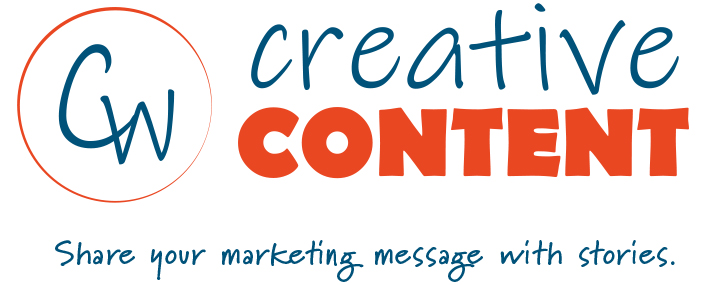Learning how to manage time can be challenging, but is SO rewarding.
Over the years, there have been MANY books written about time management. Some, of course, are better than others.
But WHY is this topic so popular? What’s the big deal about managing our time, anyway?
I think the answer is obvious. Running a successful business involves getting things done as efficiently as possible. We need to keep track of details like deadlines for our clients’ (and our OWN) projects, invoices, follow-up emails, scheduling Zoom meetings – along with personal things like doctor appointments and the occasional oil change for our car!
When I became a small business owner, after years of working full- or part-time for employers in the corporate world, it wasn’t long before I realized that TIME MANAGEMENT was going to become one of the most important parts of my new career path.
One of the MANY important things I’ve learned over the past year-and-a half, since embarking on the adventure of running my own business, is that the secret isn’t about finding the perfect solution for handling the details of my business. It’s about figuring out what works best for ME.
Because the topic of TIME MANAGEMENT covers such a wide range of things (like procrastination, distractions, de-cluttering, organization, and habits), I’m only going to talk about three in this issue:
(1) Focus, (2) Do It Now, and (3) Make (and Use) an Effective Schedule
Those three, I think, are the most important of the time management “choices” covered in a book written by “organizing expert” Sandra Felton.
In the first chapter of her book 10 Time Management Choices, Felton says: “To make time work for you, you need systems. Without a system, things fall apart.” The title of that chapter is great: “Something Strange Has Happened to Time: Too Many Options.”
FOCUS
Even though I wrote about this in the September issue of my newsletter (Need to Focus? Start a Journal!), the emphasis this time is on “keeping the main thing the main thing.”
One really helpful tool for this is one that Stephen Covey made popular over 20 years ago: priority quadrants. (Apparently, President Eisenhower used it too, which is how the Eisenhower Matrix got its name.)
QUADRANT I = Urgent & Important
QUADRANT II = Not Urgent & Important
QUADRANT III = Urgent & Not Important
QUADRANT IV = Not Urgent & Not Important
(The quadrants are just one tool mentioned in the “Handling Activity Clutter” chapter in 10 Time Management Choices.)
DO IT NOW
For the past several months, I’ve heard a lot of people talking about a podcaster named Mel Robbins. She talks about lots of things, sharing wisdom she learned “the hard way,” based on her own life experiences.
Time and again, I hear people say that what she talks about resonates with them. (After watching some of her short videos on YouTube, I can say the same!)
In her book The 5 Second Rule, Robbins summarizes the main concept: “The moment you have an instinct to act on a goal, you must 5-4-3-2-1 and physically move or your brain will stop you.”
In chapter 3, she says: “What I discovered is powerful: pushing yourself to take simple actions creates a chain reaction in your confidence and your productivity.” The things I mentioned here just scratch the surface, but the bottom line with her message is to not overthink things.
In a section titled “The Power of Courage,” she has a quote by E.E. Cummings that I love: “It takes courage to grow up and become who you really are.”
MAKE (& USE) AN EFFECTIVE SCHEDULE
Tracking your day and listing the tasks you want to accomplish can either be done digitally or on paper – or both! I’ve started using Google Keep more often lately, but I still like using my favorite sticky notes – Post-its!
Writing down “to-do” items on physical pieces of paper is a MUST for Mel Robbins, too. Each day, she says she jots down the one, two, or three things she feels she HAS to do that day. She looks at that list throughout the day, so she won’t forget.
One website that’s helped a lot of people “get organized” and do a better job of planning their days is Messies Anonymous – created by Sandra Felton in 1981.
MORE IDEAS & TIPS
Here are a few ideas for possible ways to increase your productivity … AND relieve some stress:
Keep track of appointments and your schedule in a calendar. (Google Keep is great for this … and can be accessed either on your phone with an app or on your computer.)
Use time-management systems like the Pomodoro Technique, the Eisenhower Matrix, or time blocking.
Hire a virtual assistant to handle the parts of your business you’d rather not HAVE to handle.
Look for inspiration and ideas from authors who have successfully tackled these problems themselves. Listed below are 7 books I suggest you check out for yourself:
Atomic Habits by James Clear (October 2018)
The subtitle of this book says it all: “Tiny Changes, Remarkable Results.” I couldn’t believe how many “aha” moments I had while reading this book!
The ONE Thing by Gary Keller & Jay Papasan (April 2013)
“Extraordinary results are directly determined by how narrow you can make your focus,” according to this book. The core statement (Focusing Question): “What’s the ONE Thing I can do such that by doing it, everything else will be easier or unnecessary?”
Ten Time Management Choices That Can Change Your Life by Sandra Felton and Marsha Sims (January 2021)
LOTS of helpful info in this book!
The 5 Second Rule: Transform Your Life, Work, and Confidence with Everyday Courage by Mel Robbins (February 2017)
Robbins says that even though the 5 Second Rule is easy to learn, its impact is profound. She thought it was silly when she tried it the first time, but the tool “shook up her entire life” in amazing ways!
The 7 Habits of Highly Effective People by Stephen Covey (January 1997)
I read this book about two years after it was published – when my son was still a baby and I was desperate for ways to “stay on top of things” with my daily schedule. (Back then, I really believed there must be some “magic formula” that would make juggling things easier. I know better now.)
The 4-Hour Workweek by Timothy Ferriss (December 2009)
One idea he shares: “Why not take the usual 20- to 30-year retirement and redistribute it throughout life instead of saving it all for the end?”)
Eat That Frog! by Brian Tracy (April 2017)
“There just isn’t enough time for everything on our to-do list,” wrote Tracy. “And there never will be. Successful people don’t try to do everything. They learn to focus on the most important tasks and make sure those get done.”








